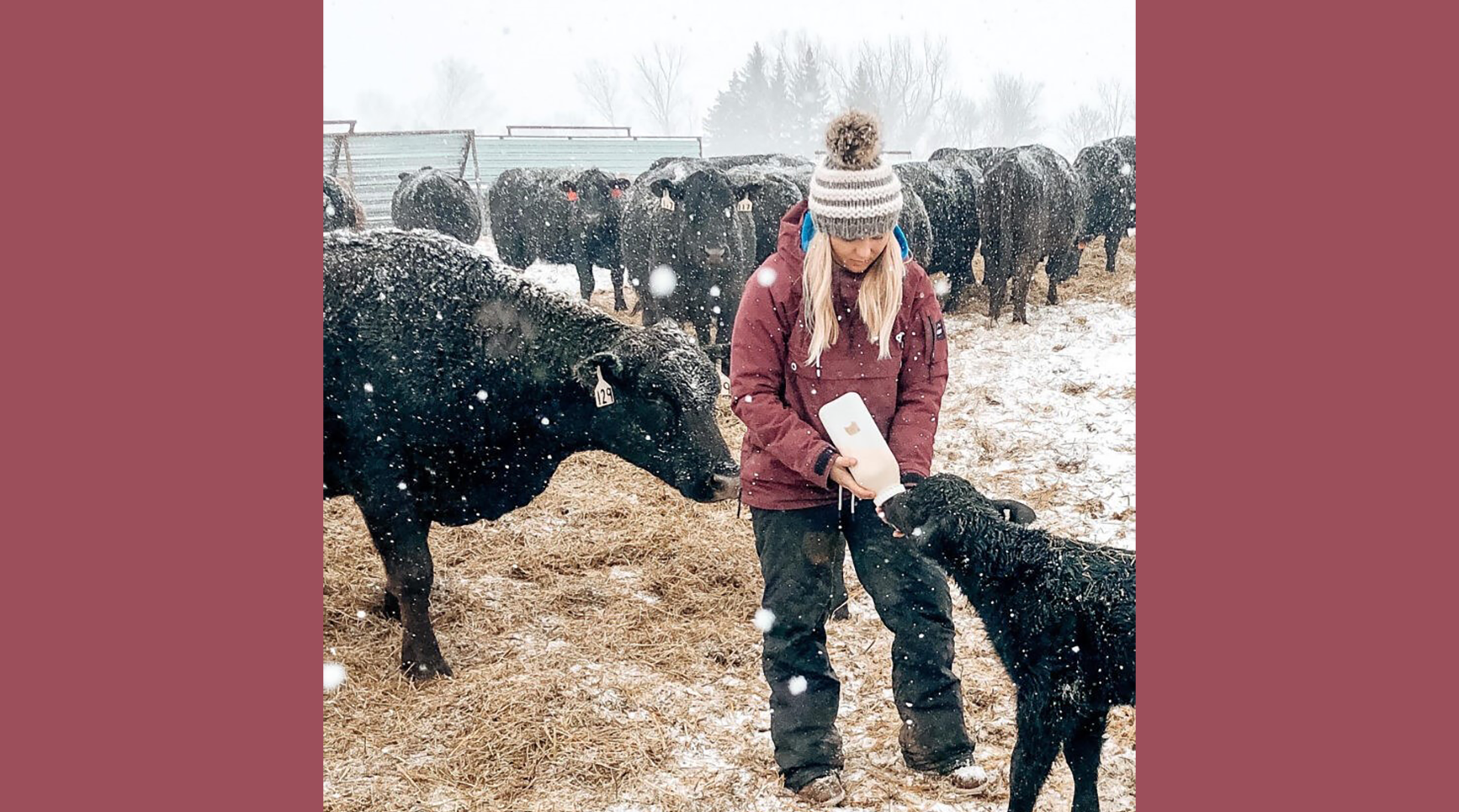by Chelsey Erdmann
How long do our cows actually live? I'm so glad you asked! Let's dive in and talk about all about the different types of cows and how long does a cow live here with us on our place.

How Long Does a Cow Life?
Well, it depends! When it comes to lifespan, different types of cattle have varying life expectancies and purposes which then impacts lifespan. However, the natural life of beef cattle can be between 15-20 years, depending on their environment. Heifers and cows (female cattle) often raise calves for 6-12+ years as they breed to produce the next generation of beef cattle; again depending on environment. Let me explain our process!
Types of Cattle
Here we raise commercial cattle then background and finish the calves on-site; which means we have mama cows, bulls, and offspring from birth through the end of their lives.
Mama Cows -- Female cows that raise calves. that we raise or purchase as replacement mothers.
Bulls -- Male cattle to breed female cattle. These boys have it made and work about 45 days a year.
Replacement Heifers -- Each year, we will have cows that do not breed back, have inadequate milk or attitudes or need to be culled for age. We bring in new genetics and new mothers to replace the mama cows we lost and maintain our herd size.
Fat Heifers -- Female cattle that did not meet our requirements for confirmation, disposition, or reproductive productivity and will be fed to be finished as beef.
Fat Steers -- Male cattle that were banded at birth to remove their testicles. They are fed to be finished as beef.
Beef Cattle
Beef cattle, those raised for meat, typically live for 1.5-2 years in the commercial beef industry. The calves that we raise here are fed here their whole lives. We begin to ship the first loads of fats around the 12 month mark then continue through the summer. Often, our range of age for our fat cattle is 12-18 months.
Breeding Stock
We start with a cow-calf operation which requires a female cow to be bred to a bull in order to grow and deliver a calf. In our part of the world, our cattle have ample grazing with manageable terrain. We also feed them with a feed wagon through the winter and offer water that is close meaning the going is easier here than more extreme areas of the world. The easier a cow has it for survival the longer she will thrive and live. We don't have a hard age cut off date where we ship cows simply due to age. Each year, every mama is evaluated and we determine if she can raise another calf. There are some mamas that are culled early and others that live here 12+ years raising calves.
Bulls are on a similar plan. They are evaluated each year and we determine if their health and disposition warrant another breeding season. Some bulls only last a few years and others last 6+ years.
The End of Life for Cattle
When our fat heifers/steers reach their target weight at 12-18 months of age, they are considered "finished." At this time we send most of them to a processing facility and a few to a local butcher. While this continues to be a time that brings mixed emotions for me as a rancher, I take comfort in knowing we are feeding families. In fact, we are more than feeding them with all of the by-products that beef provides to the world!
Cows and bulls from our breeding stock are also sent to a processing facility at the end of their life. The timing is later in life and the processing facility is different, but the meat will be used, along with the rest of the byproducts. Most of the cow and bull will be ground for burger compared to the list of cuts that are saved on a younger fat animal.
What Byproducts do Cattle Provide?
Cattle are primarily raised for meat, but the rest of the animal is utilized as well. On average, about 60% of a beef animal will be harvested as meat and the remaining 40%, or "the rest" of the animal is referred to as byproducts. My favorite byproduct that cows provide for the world is pulmonary surfactant. Foam from cow's lungs is saved to create the pulmonary surfactant that NICU infants receive to help their lungs and breathing develop! Parts of cattle are included in adhesives, plant food, pet food, shampoo, wallpaper, plywood, fertilizer, hair brushes, felt, insulation, instrument strings, hormones, enzymes, vitamins, chewing gum, candles, detergents, fireworks, matches, chalk, rubber, and medicine. Many organs are delicacies in other countries and shipped overseas to be enjoyed.
 Chelsey is the District 5 representative on the NDFB Promotion and Education Committee. She and her husband raise cows, crops and kids in east central North Dakota. She blogs at Oh That's Chelsey!
Chelsey is the District 5 representative on the NDFB Promotion and Education Committee. She and her husband raise cows, crops and kids in east central North Dakota. She blogs at Oh That's Chelsey!
